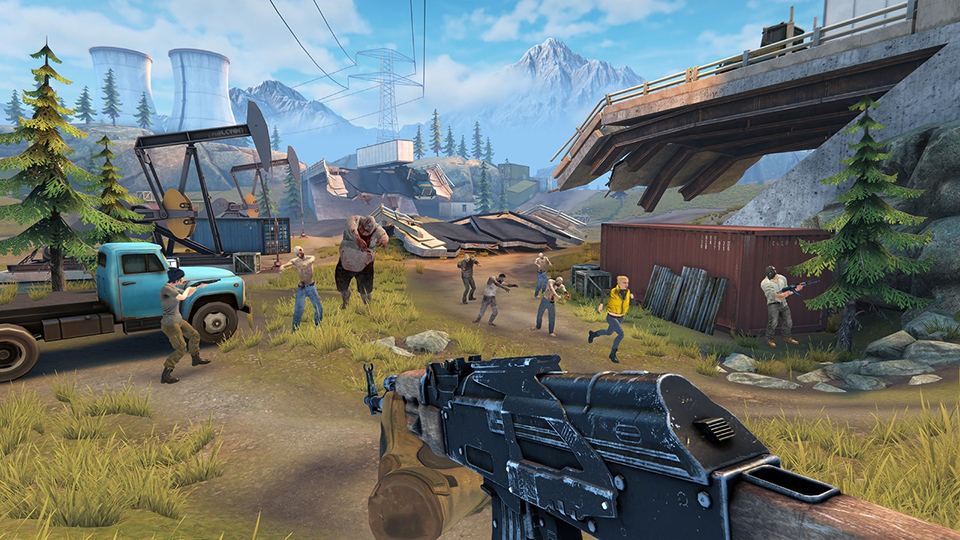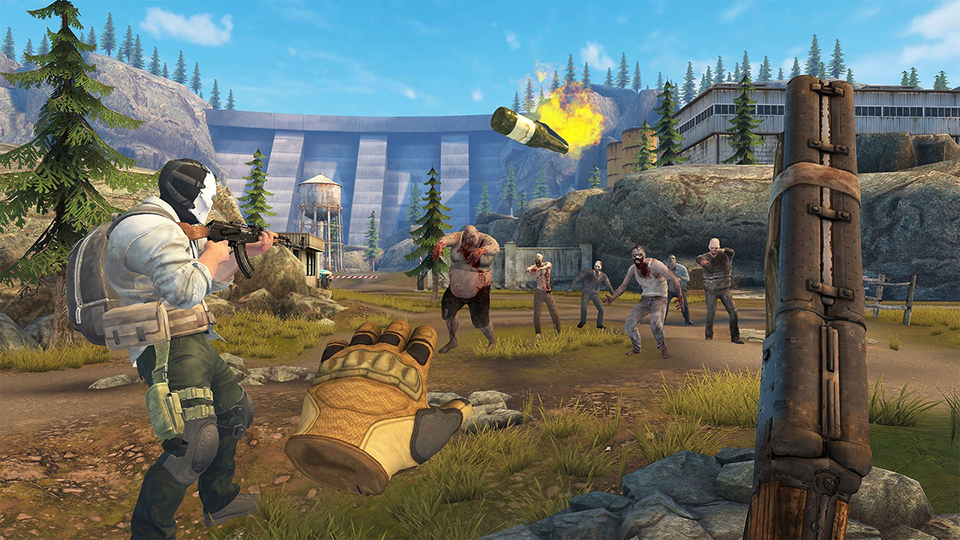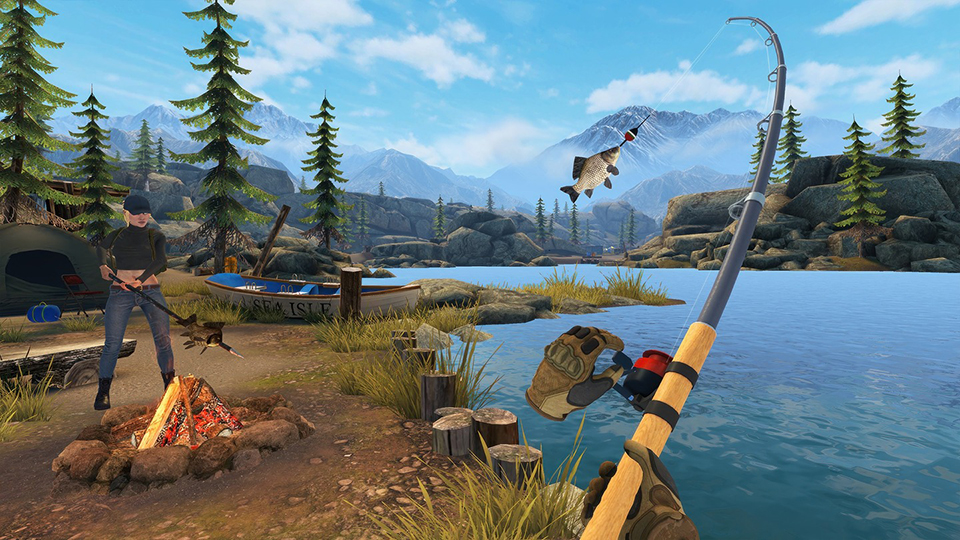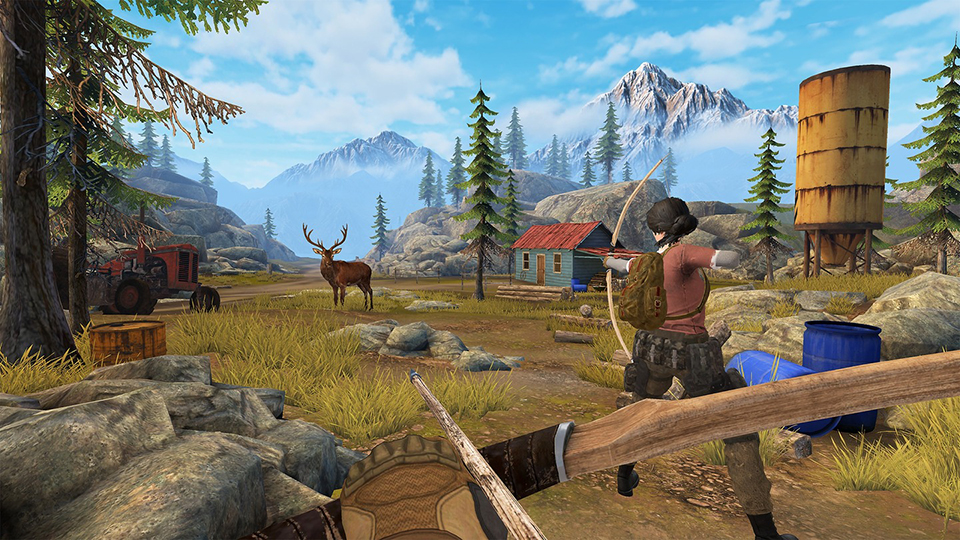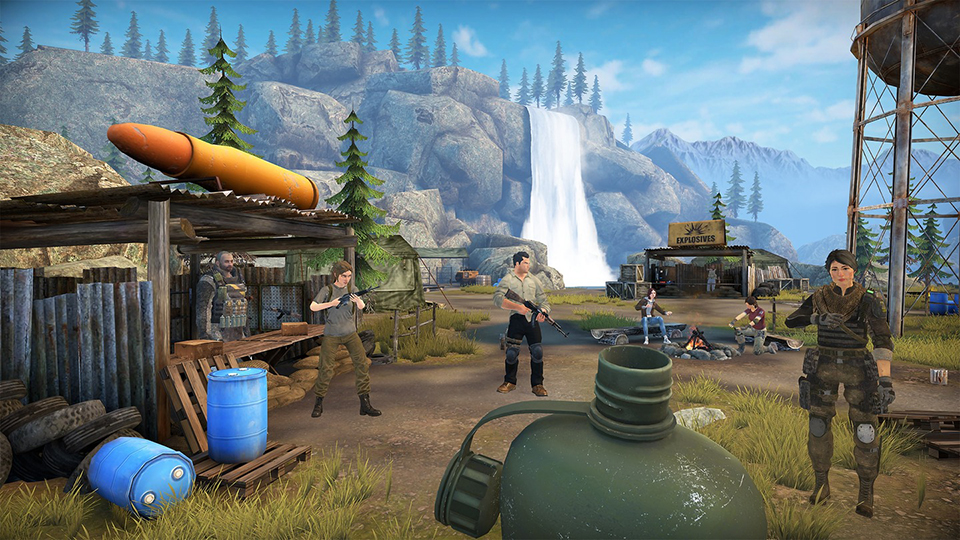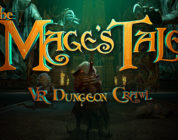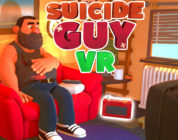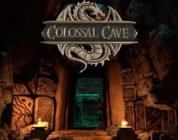Developer / Publisher – Wenkly Studio
Price – US $32.99 / CA $38.99 / EU €32.99 / UK £27.99
Release Date – May 4th, 2023
Input – 2 x Motion Controllers
Play Area – Sitting, Standing
Store Links – Steam, Quest
Reviewed on – Oculus Quest w/ Link
Survival Nation is an open-world online survival game with light RPG elements that was designed for VR headsets. This title is currently out for PCVR over on Steam as well as the Quest 2, and eventually will be headed to the PSVR 2. We have put both the PC and Quest 2 versions of the game through their paces, and we have a lot to talk about, so stick around and find out if this is worth your time and money.
Jumping right into things here, for those looking at this game for some meaningful story or character development, you aren’t going to find that in Survival Nation. Story is essentially non-existent outside of the set up in which you are a new survivor looking to join a camp and be helpful, while getting acquainted with your fellow survivors, who are about as cookie cutter generic as they get. Now, whether you choose to go solo here or join up with another 3 friends in the game’s optional co-op mode, the core game is the same with each player playing at their own pace and completing quests in their own game. As that is the case, you never formally team up for quests with friends nor do you fight for scavenged loot. Instead, time is spent hanging out and helping each other with quest lines, offering a helping hand in the form of an extra gun for hire or even giving a friend some useful supplies or weaponry. I liked this approach, as I like to do my own thing progression wise. In a game like this, especially with its very rinse-and-repeat mission structure, it’s often more fun with a friend or two along to shoot the shit and some zombies along the way.
Core gameplay is the survival part. While never going as deep into the survival genre as something like Green Hell, or for that matter even Song in the Smoke, I would still caution those with little patience for survival mechanics in games to be aware that the word “survival” is in this game’s title for a reason. Right from the start you need to deal with your food and water needs. Your hydration needs can be met by keeping a full canteen on hand or cracking open a scavenged cola, whereas food is gathered in a multitude of ways including fishing, hunting, gathering, or scouring abandoned houses. Now, I love survival games and I typically enjoy the added complexity of keeping my character’s basic needs met; Survival Nation keeps things very simple here by offering a lot of options to shove some calories in your face, but you will need to keep a near constant eye on these levels, especially in the early parts of the game before you have leveled up your character a bit. Your ability to regenerate health is directly connected to keeping your water and food levels up. Thankfully the game handles the management of these levels well with the implementation of a wrist watch that, when looked at, helpfully brings up a quick overview of all your health levels as well letting you know your XP progression and gold stores. Essentially everything you need to know on the go. The addition of two customizable and expandable item wheels activated on your right hand manages the rest of your on the go item needs, with one wheel being used for weapons and the other for various consumables (food, canteen, Molotovs) that you determine to be essential for quick access.
Now as for storage of scavenged loot and other collectibles, players can simply drop items over their left shoulder Saints and Sinners style. To access collected items players must access their inventory menu which is located in the game’s primary pop-up menu. Here players can not only manage their inventory levels, but also access the game’s crafting system, character upgrade trees, world map and quest journal. It certainly isn’t the most VR solution to these game mechanics, but I thought it worked really well and was simple to navigate.
The inventory system separates your gear and backpack items into easy to navigate sub menus which also translates into the game’s simple but still useful crafting system. Crafting recipes are unlocked through game progression and allow you to craft such things as healing and stamina tonics as well as a variety of explosives and even the ability to build a campfire to cook up food on the go. Every game mechanic in Survival Nation inventory management and crafting is fairly basic, but it is an essential part of the gameplay loop, so I would strongly recommend putting upgrades points into increasing your backpack carrying capacity early on in your playthrough.
Speaking of upgrade points, Survival Nation does flex its RPG side of things with the implementation of three skill trees: Combat, Survival and Endurance. Upgrade points are awarded through XP gain and XP is awarded for both completing quests, but also for simply killing zombies, which is nice considering you will be doing a lot of that. Now the three skill trees aren’t too deep and I had them maxed far before I hit the end point of the game, but I will say that unlike similar games with skill tree progression, Survival Nation does a nice job of making these unlocks or upgrades feel meaningful. They also made a real difference in the gameplay, like slowing hunger and water depletion, the ability to hold more weapons, increasing my backpack storage and … well you get the idea.
Now that brings us to the core of the gameplay: quests. Let me ask you….do you like fetch quests? Because that is Survival Nation when it comes to quests, missions, errands, tasks, challenges, etc. Starting off in your camp, Survival Nation essentially plays like a game that never really gets out of tutorial mode as it has you going from camp resident to camp resident doing odd jobs like collecting a thing they lost, grabbing some crafting items for them or clearing out an a zombie infested area (that will respawn three minutes later). Of course some of these missions will open up some new gameplay options such as fishing or metal detecting, but mostly they just open up more make work challenges to add to your quest list and gives you a reason to walk out into the game’s path-based open world to collect items, kill zombies, gain XP and level up. It’s all super basic and generic and makes an Ubisoft open world game look like a grand design. Making matters worse, the open world itself really lacks anything to make it interesting. Yes, the game throws in treasure hunts and a lot of find-this-thing missions, but otherwise there is little reason to explore a world with no secret areas, loot stashes or really anything to make exploration worth it.
That being said, I couldn’t stop playing it. Hell, they might as well have renamed the game “carrot on a stick” for no matter how many times I slowly walked back and forth along the same trails killing the same pack of respawned zombies, I kept playing. I just wanted to level up one more time or get just a bit more money or resources so I could buy that new gun, and then just to keep playing to level up said gun. Nothing, and I mean nothing, about this game is great, but it was all good enough to keep me goin
Speaking of nothing great, let’s talk about combat here in Survival Nation, as you will be doing a lot of zombie killing during your time here. Essentially just a thing you must deal with here in the game, killing zombies is not exactly a matter of skill or stealth or really fun as it is rather more a matter of ensuring you just don’t tread into areas with zombies that are leveled above your weapons capabilities. Don’t go into this expecting the weighty physics of Saints and Sinners melee combat, as Survival Nation opts for more a waggle fest style of hand to head combat, as you play whack-a-mole with the hoard and keep them at a distance long enough to swat them down. Now of course beating zombies down is never going to be “not fun” but it gets pretty generic pretty fast, even with the different varieties of zombies. Fortunately, ranged combat fairs slightly better once you get past the starting bow and arrow that feels limp and toy like. Pretty quickly the gun options open up and things get a bit better with a nice selection of handguns, shotguns and assault rifles, all of which can be leveled up to increase their stopping power. Now you would think that in a zombie survival game going loud with guns all the time would be a bad idea and bring the hoards down. Well, not here in Survival Nation as the game’s zombie system is pretty basic and seems to be primarily based around small little groups spaced out and huddled together, so wiping them out as I went along guns blazing was the easiest way to go about my travels. Ammo is cheaply bought and easy to stock up on, so ammo conservation simply wasn’t a thing. This kind of ruined the balance of the survival aspect of the game, and made melee combat a waste of time after only a few hours of play. Unfortunately the gunplay isn’t a ton of fun either and really comes off only serviceable. The guns feel fairly generic and the reload mechanic feels ripped out of Population One but with a bit of jank that often made reloads tough under pressure. Gun play is also made worse by the generic and unsatisfying way zombies take damage. It’s definitely not the worst I’ve played, mind you, but there really isn’t much going on here other than a blood splatter and the zombie falling to the ground only to disappear a few seconds later. It’s all just so paint-by-numbers-cheap-zombie-game, and it’s hard to sit through after playing the likes of Saints and Sinners and Resident Evil 8.
On the visual side of things one can instantly tell that Survival Nation was designed with the Quest 2 in mind. The visual style once again reminded me quite a bit of Population One with a not quite cartoon visual style, but also not going for a gritty real world look either. The PC version is definitely the nicer version to play through, sporting an improved draw distance, less pop in, improved textures and a more robust lighting system. However, like I said it still certainly looks like it was a Quest game first and simply upscaled for PC. Given that the recommended PC specs ask for a 2060 and the game still had pop in and a few performance issues on my 3080, I couldn’t help but feel like the PC version was across the board not a priority. As for the Quest 2 version, I think the game looks fine given the hardware. There is a much softer visual look to the Quest version when compared to PC, as the Quest version certainly sees a sharp detail drop off in areas like the ground when you get about 30 or 40 feet out. The Quest 2 version has more pop in and texture quality does take a bit of a hit, but on a whole Survival Nation on Quest fares pretty well when compared to the PC version. Players playing co-op cross platform will be getting essentially the same experience as each other.
However, I can’t say the bar is incredibly high here either, for while Survival Nation might be impressive visually for a small open world title running on the Quest, it suffers from weak character models, poor zombie animations, and noticeably simple and generic open world. There is little differentiation between one area from the next other than some basic landmarks and the more urban area of the southern part of the map. Additionally, there is no day/night cycle and no weather, so the game starts to feel very ‘same-y’ rather quickly. A point that is driven home even more so given how much back-and-forthing you will be doing through the same areas and same camp to talk to the same NPC’s.
On the audio side of things Survival Nation once again suffers from what is becoming all too common an issue these days in VR – it comes off overwhelmingly generic. From its repetitive soundtrack and weak weapon sounds, to generic zombie effects and lack of world sounds, everything just feels very paint by numbers and empty, lacking any real personality or originality. It’s almost like the developers raided a stock sound vault and called it a day. The voice acting is actually not horrible, but NPC’s never have anything interesting to say and I found myself often just walking off, leaving them talking to themselves once I had the quest in hand.
For those looking to play co-op, heads up that the game uses an in-game proximity chat, meaning if you are within about a 30 ft radius of each other you can hear each other clearly, however once you leave this area it essentially mutes you. Now this makes sense to me in an open lobby situation, however given this is just 4 player co-op I think most people will be grouped with friends and will want constant contact, making this a rather broken system for friends looking to hang out but do their own quests.
This brings us to my final thoughts and review score. There is absolutely nothing great about Survival Nation, heck it’s not even much of a survival game outside of being thirsty, hungry, or getting love licked by a zombie. There is no weather, no day/night cycle, no base building, and you can’t really get hurt or sick. There is also no real story, nor any very interesting missions to go on. The open world is bland and everything about the game, from its visuals to its sounds, is generic and uninspired.
However…
Survival Nation, when taken as a whole package, does take a lot of simple ideas and wraps them in a fairly polished progression system that I did find some fun in, despite its shortcomings, and it oddly kept me coming back for more. It was only at about the 7 hour mark where I found my interest really waning after doing the same things over and over again. Bringing a friend or three along to help fish, climb, hunt and bash zombie heads definitely helps to keep the game fresh. But with easily 15+ hours of fetch quests and make work tasks, the game does run out of ideas within its first few hours and simply lacks any real depth in any of its systems or story to keep players engaged. Games of this size and scope are rare to find on VR, and especially on the Quest, so I can still see many players tempted to take this game for a spin. Just keep your expectations in check.

